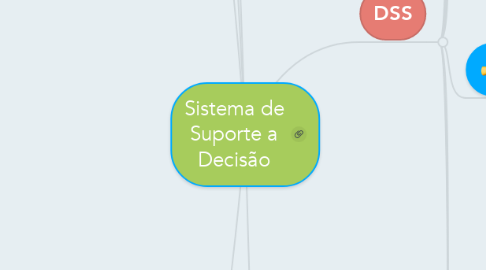
1. Decision Tree
1.1. Visual Representation of Choices, Consequences, Probabilities, and Opportunities
2. Problems
2.1. When it does happen?
2.1.1. When the System does not meet its established goals
2.1.2. The System does not work as planned
2.2. 1 When a system does not meet its established goals
2.3. 2 When a system does not yield the predicted results or does not work as planned
2.4. 3 Problem is the difference between the desired and actual outcome
2.5. 4 Problem solving also involves identification of new opportunities
3. Management
3.1. Management Systems
3.1.1. Operations research
3.1.2. Organizational development (OD)
3.1.3. Human organizations
3.2. Management levels
3.2.1. Strategic Planning - about overall objectives and policies.
3.2.2. Management Control - to assure resources that are acquired are used in an effective and efficient way.
3.2.3. Operational Control - to assure that specific tasks are carried out effectively and efficiently by operating personnel.
3.3. 10 Managerial Roles
3.3.1. Interpersonal 1. Figurehead 2. Leader 3. Liaison
3.3.2. Informational 4. Monitor 5. Disseminator 6. Spokesperson
3.3.3. Decisional 7. Entrepreneur 8. Disturbance handler 9. Resource allocator 10. Negotiator
4. Decisions
4.1. Decisions
4.1.1. structured
4.1.1.1. situation fully understood, made on a regular basis
4.1.2. unstructured
4.1.2.1. are not completely understood, emergent situation
4.1.3. semi-structured
4.1.3.1. Some of the decision making phases are structured
4.2. Characteristics of Decision Making
4.2.1. 1 Groupthink
4.2.2. 2 Evaluating what-if scenarios
4.2.3. 3 Experimentation with a real system
4.2.4. 4 Changes in the decision-making environment
4.2.5. 5 Time pressure on the decision maker
4.2.6. 6 Analyzing a problem takes time/money
4.2.7. 7 Tradeoff: accuracy versus speed
4.2.8. 8 Fast decision
4.3. Models
4.3.1. A model is simplified representation or abstraction of reality.
4.3.2. Classification
4.3.2.1. iconic
4.3.2.2. analog
4.3.2.3. mental
4.3.2.4. mathematical
4.4. Process Phases
4.4.1. Intelligence ::Define the problem
4.4.1.1. Organization objectives
4.4.1.2. Search and scanning procedures
4.4.1.3. Data collection
4.4.1.4. Problem identification
4.4.1.5. Problem ownership
4.4.1.6. Problem classification
4.4.1.7. Problem statement
4.4.1.8. ANN MIS Data mining, DLAP ES, ERP
4.4.2. Design :: Alternatives
4.4.2.1. Formulate a model
4.4.2.2. Set criteria for choice
4.4.2.3. Search for alternatives
4.4.2.4. Predict and measure outcomes
4.4.2.5. ESS, ES, SCM CRM, ERP, KVS Management Science ANN
4.4.3. Choice :: Solution
4.4.3.1. Solution to the model
4.4.3.2. Sensitivity analysis
4.4.3.3. Selection the best alternative
4.4.3.4. Plan for implementation
4.4.3.5. ESS, ES, SCM CRM, ERP, KVS Management Science ANN
4.4.4. Implementation :: Success / Failure
4.4.4.1. ESS ES KMS KMS, ERP
4.5. Disciplines
4.5.1. Behavioral
4.5.2. Scientific
5. DSS
5.1. DSS Definitions
5.1.1. A Decision Support System (DSS) is a computer-based information system that supports business or organizational decision-making activities
5.1.2. A decision support system (DSS) is a computer program application that analyzes business data and presents it so that users can make business decisions more easily
5.1.3. Decision Support Systems (DSS) are a specific class of computerized information system that supports business and organizational decision-making activities
5.1.4. A decision support system (DSS) is a computer-based application that collects, organizes and analyzes business data to facilitate quality business decision-making for management, operations and planning
5.1.5. A computerized information system used to support decision-making in an organization or business
5.1.6. Interactive computer-based systems, which help decision makers utilize data and models to solve unstructured problems
5.1.7. Decision support systems couple the intellectual resources of individuals with the capabilities of the computer to improve the quality of decisions. It is a computer-based support system for management decision makers who deal with semistructured problems
5.2. DSS components
5.2.1. Inputs: Factors, numbers, and characteristics to analyze
5.2.2. User Knowledge and Expertise: Inputs requiring manual analysis by the user
5.2.3. Outputs: Transformed data from which DSS "decisions" are generated
5.2.4. Decisions: Results generated by the DSS based on user criteria
5.3. DSS Architecture
5.3.1. Data
5.3.2. Knowledge / Intelligence
5.3.3. User
5.3.4. Interface Model
5.4. DSS Usages
5.4.1. • Career Decisions • Education Decisions • Pesonal Financial Decisions • Infomation Technology Decisions • Investment Decisions • Legal Decisions • Purchasing Decisions • Real Estate Decisions • Relocation Decisions • Retirement Decisions • Shipping Decisions • Travel and Entertainment Decisions • Vehicle Decisions • Geographic/Spatial
5.5. Types of DSS
5.5.1. Model-oriented DSS
5.5.2. Data-oriented DSS
5.6. Benefits
5.6.1. Improves personal efficiency
5.6.2. Speed up the process of decision making
5.6.3. Increases organizational control
5.6.4. Encourages exploration and discovery on the part of the decision maker
5.6.5. Speeds up problem solving in an organization
5.6.6. Facilitates interpersonal communication
5.6.7. Promotes learning or training
5.6.8. Generates new evidence in support of a decision
5.6.9. Creates a competitive advantage over competition
5.6.10. Reveals new approaches to thinking about the problem space
5.6.11. Helps automate managerial processes
5.6.12. Create Innovative ideas to speed up the performance
5.7. DSS Characteristics and capabilities
5.7.1. Solve semi-structured and unstructured problems
5.7.2. Support managers at all levels
5.7.3. Support individuals and groups
5.7.4. Interdependence and sequence of decisions
5.7.5. Support Intelligence, Design, Choice
5.7.6. Adaptable and flexible
5.7.7. Interactive and ease of use
5.7.8. Interactive and efficiency
5.7.9. Human control of the process
5.7.10. Ease of development by end user
5.7.11. Modeling and analysis
5.7.12. Data access
5.7.13. Standalone and web-based integration
5.7.14. Support varieties of decision processes
5.7.15. Support varieties of decision trees
5.7.16. Quick response
5.8. Disadvantages
5.8.1. Design flaws
5.8.2. Inadequate understanding of task or user
5.8.3. Inadequate modeling of “reality”
5.8.4. Inadequate understanding of human information processing constraints
5.8.5. Can promote cognitive biases
5.8.6. Can stop the user from thinking - accept solution because “the computer says so”
5.9. Why Companies are moving to computerized support?
5.9.1. Business pressures result of competitive business
5.9.2. Responses to counter the pressures
5.9.3. Support to better facilitate the process
6. Business Intelligence (BI)
6.1. BI is an umbrella term that combines architectures, tools, databases, analytical tools, applications, and methodologies
6.2. Four major components
6.2.1. data warehouse
6.2.2. business analytics
6.2.3. business performance management (BPM)
6.2.4. user interface
